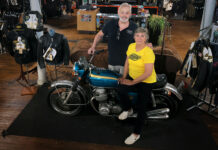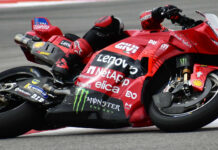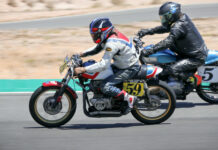Following the pencil trail of Hermann Tilke, the MotoGP World Championship heads east this week towards Shanghai – another circuit designed by the German architect Built in 2004 to host the Formula 1 World Championship, Shanghai is an ultra-modern facility with a spectacular infrastructure and a demanding track. Following on from the success of Marco Melandri’s first victory of the season in the Grand Prix of Turkey at Istanbul, the riders of the Fortuna Honda team heads toward a track that holds special memories for them. Marco Melandri feels in strong shape after his Turkish win and he is looking forward to the Grand Prix of China, where he climbed onto the third step of the podium to crown a very positive weekend, having lapped second fastest in free practice and qualifying, last year. “I’m going to China feeling fully charged after that great win in Istanbul and the fantastic job done by the team. As in Istanbul the track in Shanghai last year was also to my liking straight away. In 2005 I was fast in the dry during practice and also in the wet during the race. So I’m feeling relaxed, I feel good and I know that we’ll be starting out with a good base set-up. I’m ready for another evenly-contested race. The front straight is really long and it should be really good fun to watch.” The visit to China also represents a return to a happy hunting ground for Toni Elias. “I really like the Shanghai circuit,” says the Spaniard, who has shown flashes of his speed and potential already this season. “Last year I got a good feeling from it virtually straight away. I went well in practice and it looked like being a good race for me but then we had a torrential downpour. I was doing well on wet, I was third when for a mistake on the starting grid I had to do a ride through loosing important positions. In 2005 Shanghai was completely new but this time I’m approaching it in a different way. I really like the bike, I know we have a good base set-up and I hope I can put the experience I have gained over these first few races into good use and come out with a good result.” 2006 World championship 1. Nicky Hayden (Usa/Honda) with 52 points 2. Loris Capirossi (Ita/Ducati) with 51 points 3. Marco Melandri (Ita/Honda) with 45 points 7 . Toni Elias (Sp/Honda) with 32 points THE TRACK Built in 2004 to host the Formula 1 World Championship, Shanghai is an ultra-modern facility with a spectacular infrastructure: huge grandstands with capacity for 150,000 fans and offering views of almost the whole circuit, and two imposing seven-story VIP and hospitality towers From a technical point of view the track features two extremely fast and long straights, a series of tight corners and two curves that turn almost 360°. at each end of the paddock. Designed initially for F1, Shanghai is long and wide and offers plenty of overtaking opportunities. Marco discusses the track:“It is a very particular circuit with two long straights – one measuring 1202 metres, which is the longest in the championship. The first corner is probably the strangest I have seen because it is really long and you have to change gear whilst lent over and there is a dramatic change in level. It is important to have a smooth line through turns 3, 4 and 5, and a really good exit from turn 7 in order to get plenty of speed up for the straight. Then you have to prepare yourself for a hard braking zone at the end of the straight (the hardest in the championship), which is fundamental for a good lap.” FOCUS: how the world championship paddock is transported In Europe all the team’s material travels in the trucks, which also serve as offices but as if by magic are able to transport the paddock from one country to another. But how is that material moved outside of Europe? It’s a tough one. The team’s material is packed into boxes and shipped out on a special charter flight. There is a lot of red tape to get through the border control and it requires a lot of organisation to get the boxes through customs – firstly at the airport and then at the circuit itself. In China the whole customs process can take up to 48 hours. TRAVELLING BY NUMBERS: 3 – the amount of Boeing 747 aircraft that carry the materials for the teams, Dorna and the TV. 260,000kg – the total weight of the material transported. 200kg – the total weight of all the documents, bound in 194 books. 40 – number of trucks used to transport the boxes from the airport to the circuit. IN DETAIL: 90,000 kg – only MotoGP material 10,600 kg – TEAM FORTUNA HONDA material, packed into 33 boxes (4 for the bikes alone, 5 for spare parts, 2 for telemetry equipment, 11 for garage structure, 2 for wheels, 6 for engines, 1 for office material and 2 for the riders) 8,000 kg – material provided by MICHELIN (tyres and equipment) The costs vary from one circuit to another. For example, the trip from Istanbul to Shanghai is around 3 euros per kilo, whilst the return from Shanghai to Le Mans is more than double that. The most difficult customs are in China and the easiest are in Malaysia.
Melandri Confident, Relaxed Heading Into Chinese Grand Prix
Melandri Confident, Relaxed Heading Into Chinese Grand Prix
© 2006, Roadracing World Publishing, Inc.






